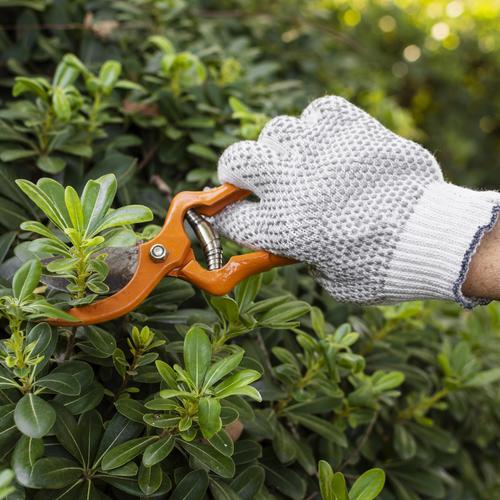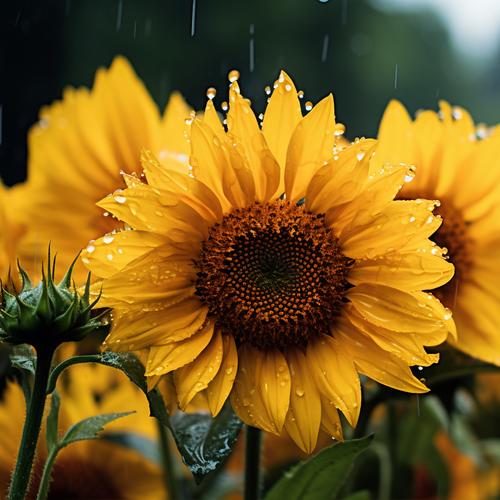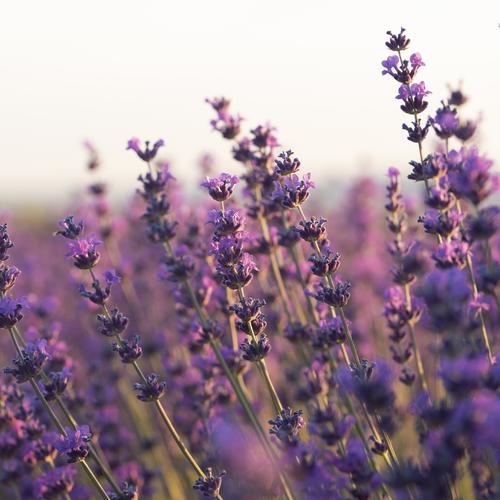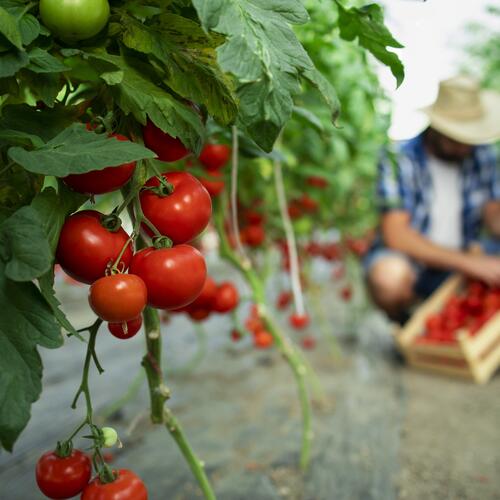Start Prepping Your Garden in May, Ready for Summer!
May Preparations for the Summer
Preparing your garden in May sets the stage for a vibrant and thriving outdoor space during the summer months. With the arrival of warmer weather and longer days, May offers an ideal opportunity to undertake essential tasks to ensure your garden flourishes throughout the season. Here's a comprehensive guide on garden preparation in May to get ready for summer:
Assessment and Planning
Begin by assessing your garden's current condition. Take note of any areas that need attention, such as damaged plants, bare patches, or overgrown areas.
Create a garden plan outlining your goals for the season. Consider factors such as plant placement, colour schemes, and desired garden features.
Soil Preparation
Test the soil pH levels using a soil testing kit. Adjust the pH if necessary by adding lime to raise pH or sulfur to lower pH, ensuring optimal growing conditions for plants. Enrich the soil with organic matter such as compost, well-rotted manure, or composted leaves. Spread a layer of organic mulch around plants to retain moisture and suppress weeds.
Planting and Transplanting
Plant warm-season annuals, vegetables, and herbs suited for your climate zone. Choose varieties that thrive in full sun and provide adequate spacing between plants. Transplant seedlings started indoors or purchase nursery-grown plants for summer blooms. Harden off seedlings gradually before planting them outdoors to acclimate them to outdoor conditions.

Pruning and Maintenance
Prune spring-flowering shrubs and trees after they finish blooming to shape them and encourage healthy growth. Deadhead spent flowers regularly to prolong blooming and encourage continuous flowering throughout the season. Trim hedges, shrubs, and bushes to maintain their shape and size. Remove any dead or diseased branches to promote overall plant health.
Weed Control
Stay on top of weed management by regularly removing weeds as soon as they appear. Use hand tools or a hoe to remove weeds manually or apply mulch to suppress weed growth. Consider using organic weed control methods such as vinegar-based herbicides or homemade weed-killing solutions to minimize the use of synthetic chemicals.
Watering and Irrigation
Water plants deeply and consistently, especially during dry spells or periods of drought. Aim for early morning watering to minimize water loss due to evaporation. Install a drip irrigation system or soaker hoses to deliver water directly to the root zone of plants, promoting efficient water use and reducing water waste.
Pest and Disease Management
Monitor plants regularly for signs of pest infestation or disease. Look for symptoms such as holes in leaves, yellowing foliage, or wilting. Implement integrated pest management (IPM) strategies to control pests and diseases, including cultural, mechanical, and biological methods. Use organic pesticides sparingly and as a last resort.
Fertilization
Apply slow-release or organic fertilizers to provide essential nutrients to plants throughout the growing season. Follow package instructions for proper application rates and timing. Avoid over-fertilizing, as excessive fertilizer can lead to nutrient runoff, water pollution, and damage to plant roots.
Garden Structures and Features
Clean and maintain garden structures such as trellises, arbours, and fences. Repair any damage and apply a fresh coat of paint or sealant if needed.
Add decorative elements such as garden art, statues, or outdoor lighting to enhance the visual appeal of your garden and create focal points.
Garden Care
Monitor weather forecasts and protect tender plants from late frosts or unexpected temperature drops. Cover plants with frost cloth or move containers indoors if frost is predicted. Stay vigilant against garden pests such as aphids, slugs, and snails. Handpick pests or use natural predators such as ladybugs or predatory nematodes to control infestations. Stay proactive in garden maintenance by staying organized, keeping tools clean and well-maintained, and addressing issues promptly before they escalate.
By following these comprehensive steps for garden preparation in May, you'll lay a solid foundation for a beautiful and productive garden that thrives throughout the summer months. Remember to enjoy the process and take pride in your efforts as you watch your garden flourish and bloom in the warm summer sun.

What to Plant in May Ready for Summer
Planting in May offers a wealth of options for adding colour, fragrance, and texture to your garden. With the soil warming up and the risk of frost diminishing in many regions, May is an ideal time to introduce a wide variety of plants and flowers. Here are some of the best options to consider for planting in May:
Annual Flowers
Marigolds (Tagetes): These cheerful annuals come in vibrant shades of orange, yellow, and red, adding a pop of colour to borders, beds, and containers. Marigolds are easy to grow and attract beneficial insects to the garden.
Zinnias (Zinnia elegans): With their bright, daisy-like blooms in a rainbow of colours, zinnias are a popular choice for summer bedding plants. They thrive in full sun and well-drained soil, making them perfect for sunny garden spots.
Cosmos (Cosmos bipinnatus): Delicate and airy, cosmos flowers produce an abundance of daisy-like blooms in shades of pink, white, and purple. These low-maintenance annuals attract butterflies and bees and are ideal for cutting gardens.
Petunias (Petunia spp.): Petunias are known for their profusion of trumpet-shaped flowers in a wide range of colours, including pink, purple, red, and white. They perform well in containers, hanging baskets, and flower beds.
Sunflowers (Helianthus annuus): Sunflowers are iconic summer flowers with large, cheerful blooms that follow the sun. Plant them in a sunny location with well-drained soil for best results.

Perennial Flowers
Lavender (Lavandula spp.): Fragrant and drought-tolerant, lavender is a versatile perennial plant that adds beauty and fragrance to the garden. Plant it in a sunny, well-drained location and enjoy its aromatic blooms all summer long.
Salvia (Salvia spp.): Salvias are easy-to-grow perennials with spikes of colourful flowers that attract pollinators to the garden. Choose from a variety of species and cultivars, including culinary sage (Salvia officinalis) and ornamental salvias such as Salvia nemorosa.
Coneflowers (Echinacea spp.): Coneflowers are native perennials known for their daisy-like flowers with distinctive raised centres. They come in a range of colours, including pink, purple, and white, and are beloved by butterflies and bees.
Black-eyed Susans (Rudbeckia spp.): These cheerful perennials feature golden-yellow flowers with dark centres, adding a splash of colour to borders and meadows. They're easy to grow and attract pollinators to the garden.
Coreopsis (Coreopsis spp.): Also known as tickseed, coreopsis is a sun-loving perennial with bright yellow, daisy-like flowers. It blooms prolifically throughout the summer and is drought-tolerant once established.

Vegetables and Herbs
Tomatoes (Solanum lycopersicum): May is an excellent time to plant tomato seedlings or transplants in the garden. Choose from a variety of tomato cultivars suited to your climate and growing conditions.
Peppers (Capsicum spp.): Peppers thrive in warm weather and can be planted in May for a summer harvest. Choose from sweet peppers, bell peppers, hot peppers, and chilli peppers, depending on your taste preferences.
Basil (Ocimum basilicum): Basil is a popular herb for summer gardens, prized for its aromatic leaves and culinary versatility. Plant basil in containers or garden beds in a sunny location and harvest fresh leaves for use in salads, pasta dishes, and sauces.
Climbing Plants
Morning Glories (Ipomoea spp.): Morning glories are fast-growing annual vines with colourful, trumpet-shaped flowers that bloom in the morning hours. Plant them along fences, trellises, or arbours for a splash of summer colour.
Clematis (Clematis spp.): Clematis vines are prized for their large, showy flowers in a variety of colours and forms. Plant them near a support structure such as a trellis or pergola, and enjoy their spectacular blooms throughout the summer months.
Bulbs and Tubers
Dahlias (Dahlia spp.): Dahlias are summer-flowering bulbs known for their large, showy blooms in a wide range of colours, shapes, and sizes. Plant dahlia tubers in May for a stunning display of flowers in late summer and fall.
Gladiolus (Gladiolus spp.): Gladiolus bulbs produce tall spikes of colourful flowers that add vertical interest to the garden. Plant gladiolus corms in well-drained soil and provide support for the tall flower spikes.

